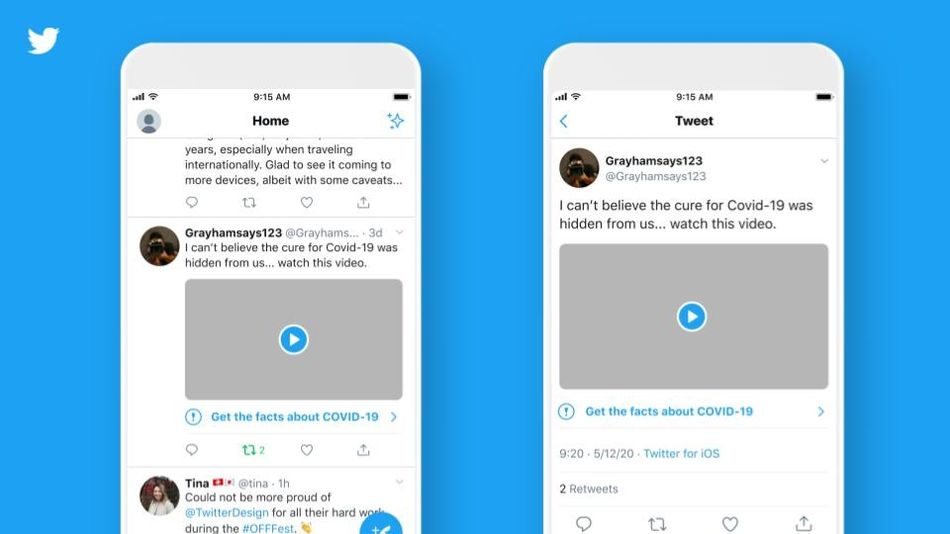Twitter is advancing one step further in the fight against coronavirus misinformation.
Executives announced in a company blog Monday that Twitter would start affixing labels and warnings to tweets containing information about COVID-19 that goes against the advice and knowledge of public health experts. That will include tweets where the misinformation is contained in media, like videos and images.
Twitter previously announced that it would label or remove misinformation that could cause physical harm or widespread panic, including conspiracy theories. Monday’s announcement broadens the policy to content where harm is not as obviously imminent.

Other misinformation will get a label with a link out to more resources.
Image: twitter
An important clarification to the policy came on Twitter shortly after the post. In response to questions from reporters, Twitter executive Yoel Roth clarified that the company’s new policy would apply to the tweets and content of world leaders — including President Trump.
This is an important clarification because Twitter has been inconsistent in applying its content policies to President Trump in the past. Additionally, Trump has lied and spread misinformation about coronavirus cures, treatments, and progress.
These labels will apply to anyone sharing misleading information that meets the requirements of our policy, including world leaders.
— Yoel Roth (@yoyoel) May 11, 2020
Flagging misinformation will take three forms on Twitter. It could be removed if the information is egregious and could cause real world harm. Twitter could gray out the Tweet or content and affix a warning label if the content contains a “disputed claim” and the potential for harm is “severe.” Or it could get a label — which is basically a line of text linking out to other information — if the information is misleading our disputed, but the potential for harm is “moderate.” Here’s a handy graph.

Making distinctions between bad, worse, and life threatening? Love that for us.
Image: twitter
It’s not clear how Twitter will find the tweets that it labels or affixes warnings to. In a section found within the post called “How will we identify these Tweets?,” Twitter says it will use “internal systems to proactively monitor content related to COVID-19,” as well as “rely on trusted partners” for assessing the risk level of tweets. Not exactly transparent.
Social media and other tech companies have banded together to fight coronavirus misinformation. But with a prominent source of this content being the President himself, it’s an uphill battle.
